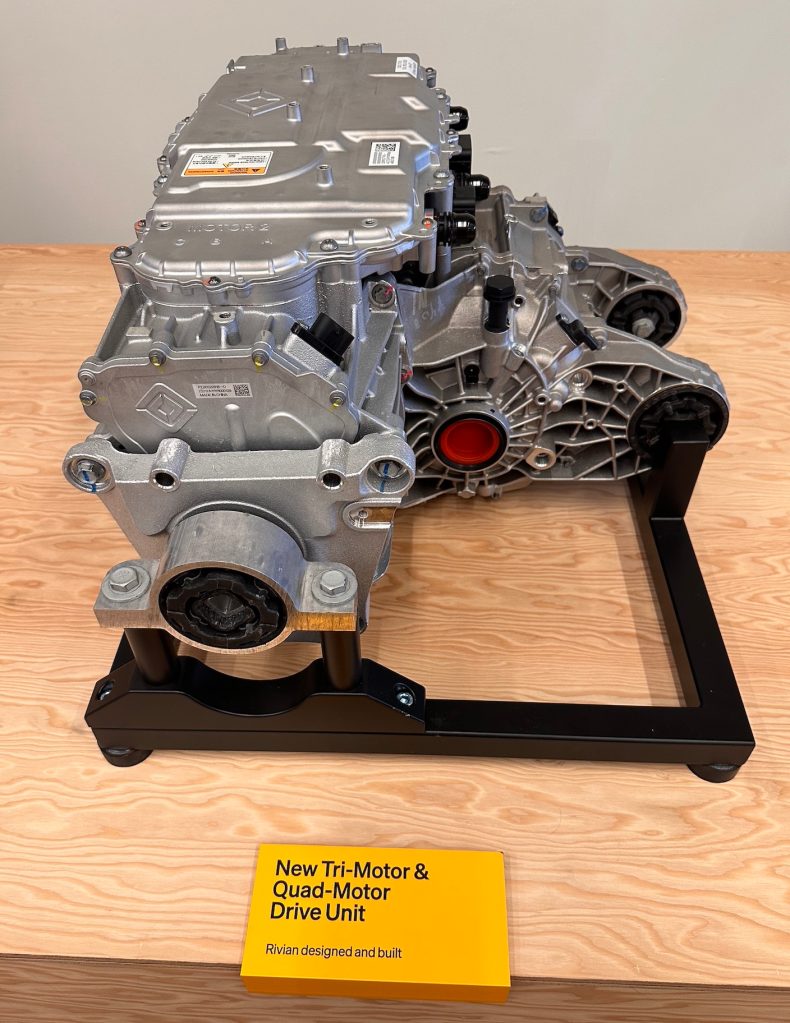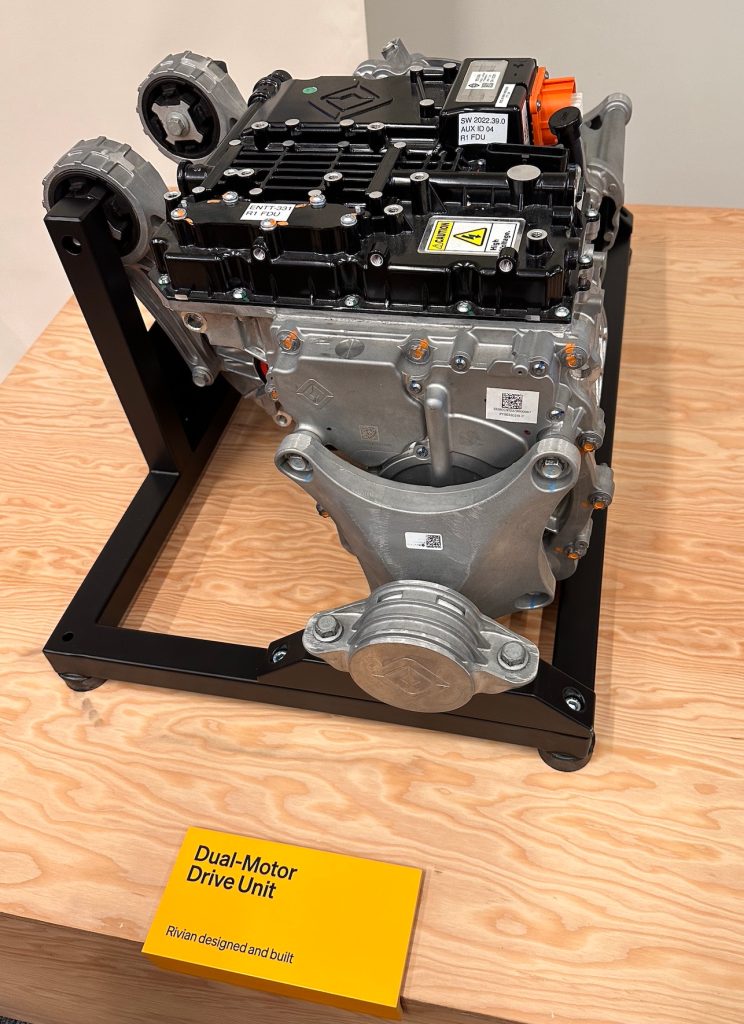Rivian has unveiled its next-generation R1S and R1T electric vehicles to cut cost without affecting the driver experience negatively.
In fact, the automaker is improving it.
It’s no secret that Rivian needs to cut costs. The automaker is currently losing about $36,000 on every vehicle it delivers.
The company has guided turning that into a slightly positive gross margin in Q4, which is coming fast.
Rivian has been approaching this issue from many different angles, including renegotiating with suppliers, but the biggest impact is expected to come with this redesigned next-gen version of the R1 platform.
Next-Gen Rivian R1
Today, Rivian is officially unveiling and starting deliveries of the next-gen R1S and R1T.
From a design perspective, the vehicles are fairly similar, with mostly a few new design accents, like beautiful new plaid accents throughout the vehicles, updated front and back lighting, and many UI changes.
However, the bulk of the update is under the hood, so to speak.
Rivian focused on updating hardware for efficiency, manufacturability, and cost. Here are a few examples:
The company updated its battery module. Here’s the first generation versus the second:


The new module design, along with the electronics system, have been updated for better efficiency and easier manufacturability.
Rivian commented:
New Large and Max battery packs have redesigned modules and more efficient packaging, making them easier to manufacture and service, while offering up to an estimated 420 miles of range.
The company also has a new module design for its Standard pack that now allows the use of LFP battery cells. Rivian is talking about an EPA-estimated 270 miles of range for this new pack.
Rivian also updated its drive units:


The company brought more motor design and manufacturing in-house, allowing for a more efficient packaging and implementation in its vehicles.
Rivian wrote about its new drive units:
The new R1 platform offers more power, performance, and range, thanks to a Rivian-designed and built drive unit offered in Tri-Motor and Quad-Motor configurations. The 1,025 horsepower Quad-Motor R1T delivers 0-60 mph in less than 2.5 seconds and a staggering 1,198lb ft of torque when using LaunchMode.A Rivian-built Dual-Motor is available as well. These motors are now designed, engineered, and manufactured fully in-house.
Where Rivian made some of the biggest improvements are in its electrical architecture and compute platform.


The company went from 17 ECUs found in first-generation vehicles down to 7 in this new one.
The new architecture allowed Rivian to remove 1.6 miles (2.6km) of wiring from each vehicle. For example, the automaker was able to eliminate this entire harness:

I lifted that thing up, and it was heavy. That’s great for the efficiency of the vehicle, but it also enabled Rivian to eliminate a lot of steps in its manufacturing, which should improve its manufacturing costs greatly.
A fear that I had with this next-gen platform from Rivian is that since cost-cutting was a priority, I thought it might lose some of its premia, but that’s not the case.
For example, the automaker greatly improved its ADAS hardware suite in the second-generation Rivian R1:
We are talking about 8 times the amount of megapixels in the cameras all around the vehicles and Rivian decided not to go vision-only. The automaker also has 5 radars and ultrasonics all around the vehicle.
Rivian also has a new on-board computer to handle all the data coming from those sensors:

The automaker plans to release increasingly more advanced driver-assist features, starting with autonomous lane changes, but it expects that its hardware suite will enable up to level 3 autonomous driving in the future.
One of the rare design changes to the next-generation R1 is the lighting system. For example, the automaker updated its lighting to communicate the charging state with this new design:
There are also a few new colors, both inside and outside, and Rivian is not cutting down on its premium feel there, which is great news.
The UI and software have been greatly updated with the new generation. Here’s a list of some of the new features:
- Car keys in Apple Wallet on iPhone and Apple Watch, and some Google Pixel devices
- Connect+, a new subscription service, supports streaming video through Google Cast and provides access to more than 3,000 apps
- Apple Music with Dolby Atmos support in Connect+

The new second-gen R1S will start at $75,900, and the new R1T will start at $69,900. Prices go up fairly quickly if you want the bigger battery packs and tri- or quad-motor powertrains. Rivian is already producing and delivering the new generation.
However, the bigger question is how much it costs Rivian to build them. We won’t have a complete answer on that for another few months.
Stay tuned for my first drive experience in the second-generation R1S and R1T later today.
FTC: We use income earning auto affiliate links. More.



